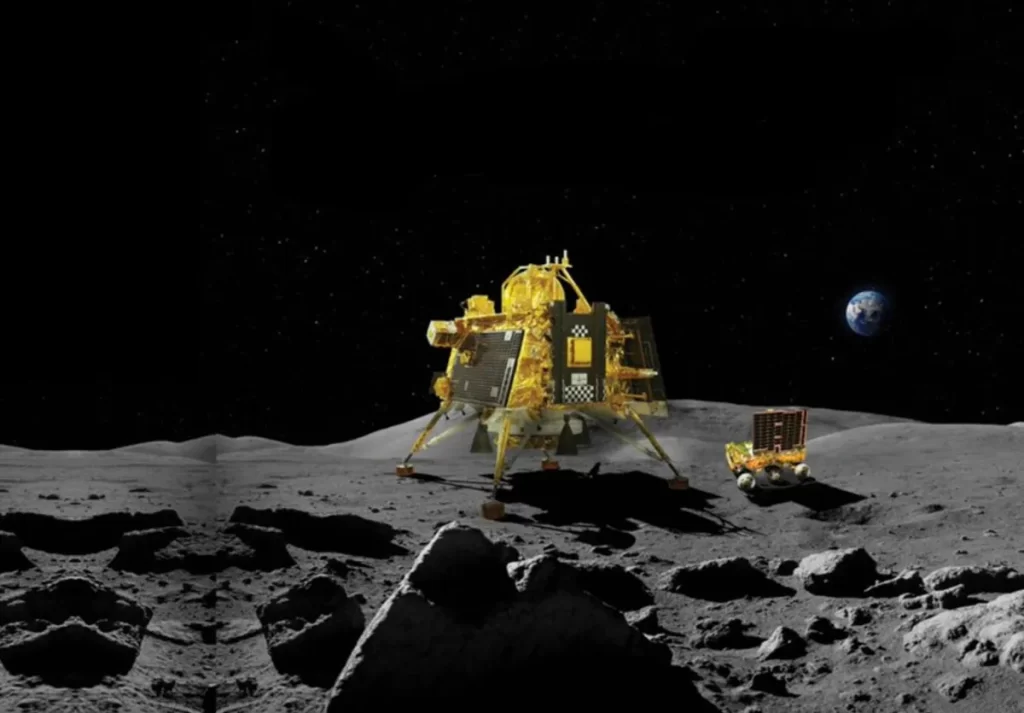India’s moon rover has confirmed the presence of sulphur and detected several other elements on the lunar south pole, says the country’s space agency.
Last week, India became the first country to land a craft near the largely unexplored south pole, and just the fourth nation to land on the moon.
“The Laser-Induced Breakdown Spectroscopy (LIBS) instrument onboard Chandrayaan-3 Rover has made the first-ever in-situ measurements on the elemental composition of the lunar surface near the south pole,” the Indian Space Research Organisation (ISRO) said in a statement dated Monday.
“These in-situ measurements confirm the presence of sulphur in the region unambiguously, something that was not feasible by the instruments onboard the orbiters,” it said.
The spectrographic analysis also confirmed the presence of aluminium, calcium, iron, chromium and titanium on the lunar surface, ISRO added, with additional measurements showing the presence of manganese, silicon and oxygen.
The six-wheeled solar-powered rover Pragyan (wisdom )in Sanskrit will amble around the relatively unmapped south pole and transmit images and scientific data over its two-week lifespan as it searches for signs of frozen water that could help future astronaut missions as a potential source of drinking water or to make rocket fuel.
The rover also will study the moon’s atmosphere and seismic activity, ISRO chairman S Somanath said.



